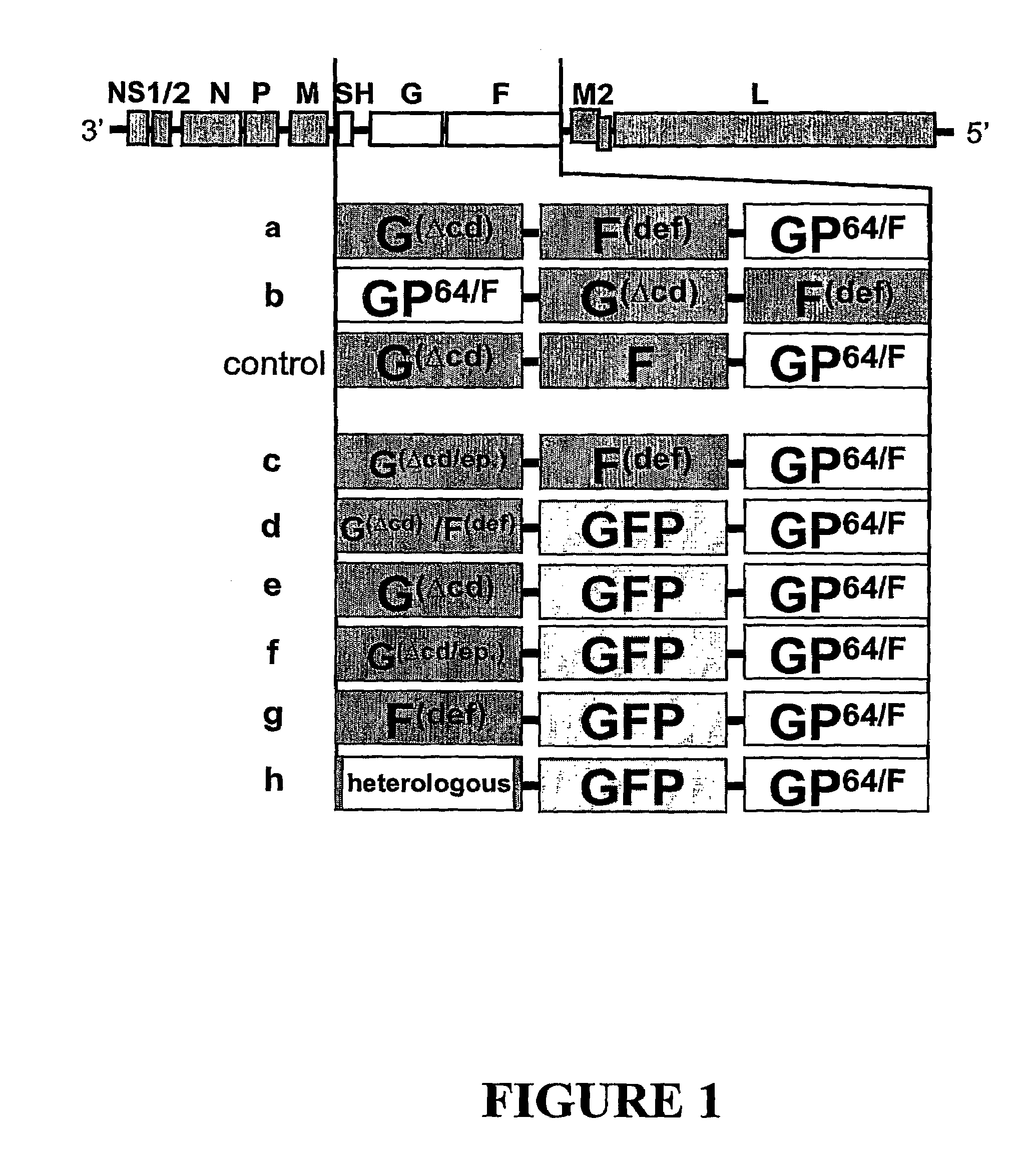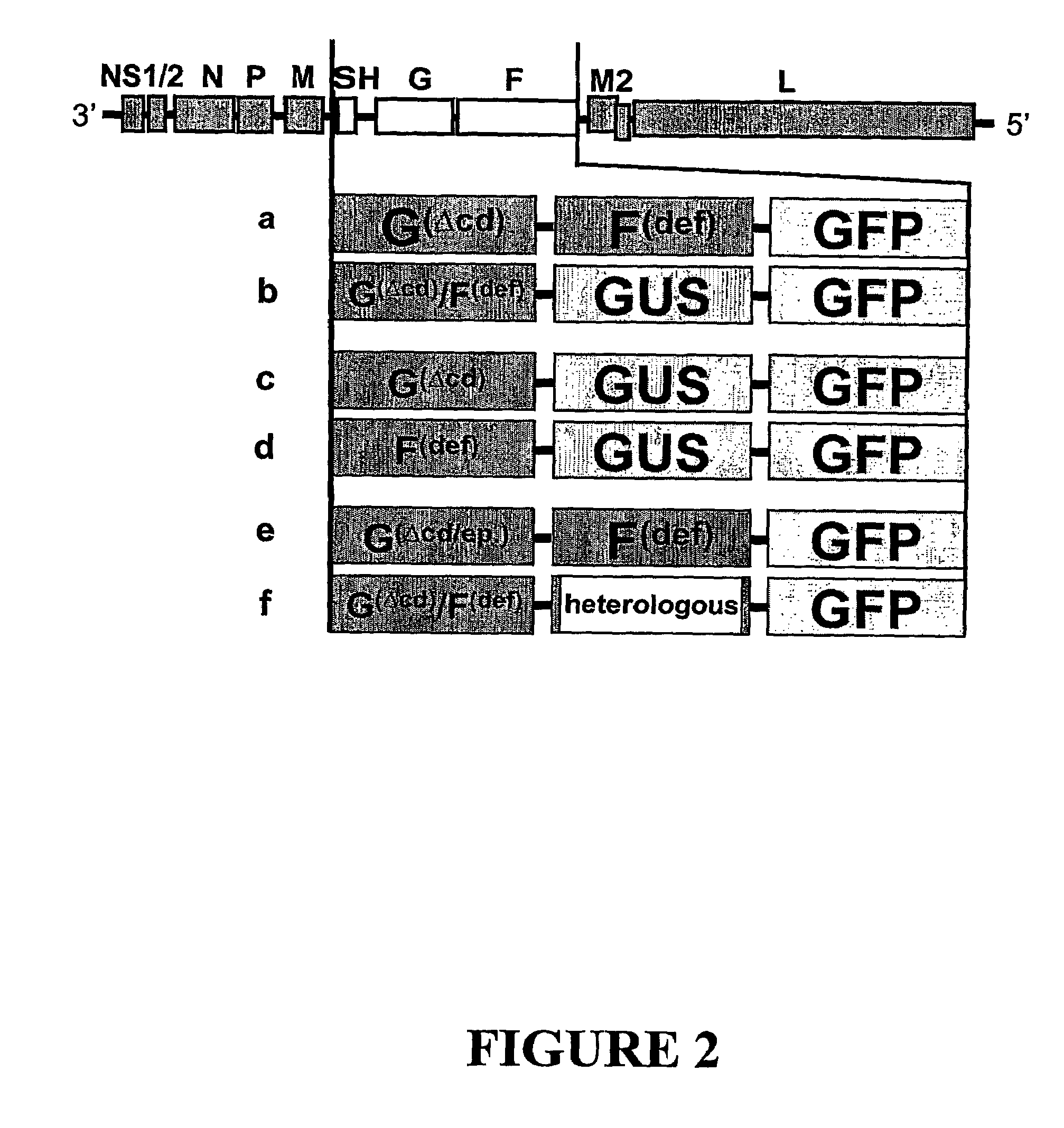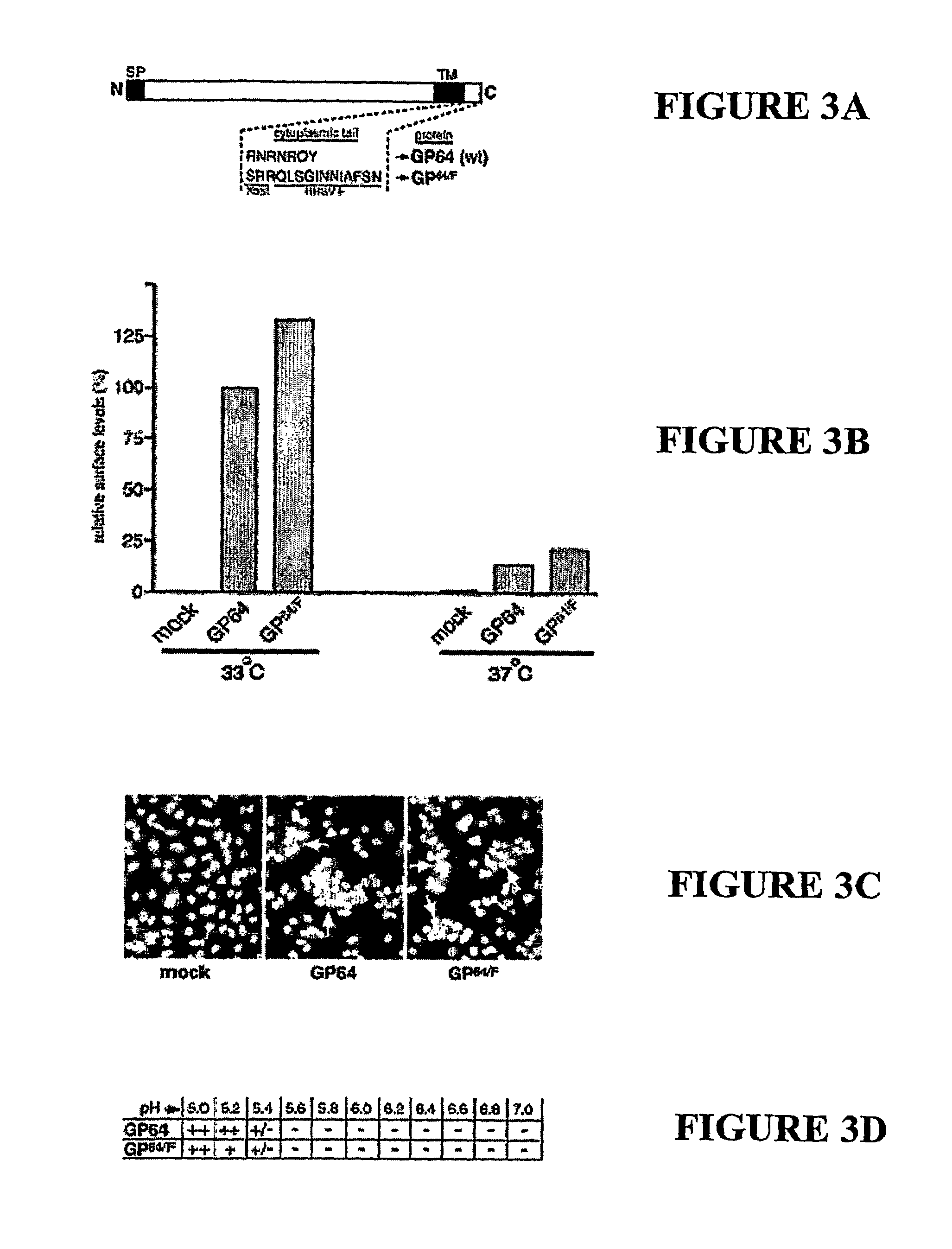Recombinant viruses of the paramyxoviridae family with heterologous envelope glycoproteins
a technology of paramyxoviridae and recombinant viruses, which is applied in the direction of antibody medical ingredients, peptide sources, peptides, etc., can solve the problems that recombinant viruses are infectious but cannot spread between host cells, and achieve the effects of stabilizing infectivity, improving potency and effectiveness of virus vaccines, and attenuating disease-causing potential
- Summary
- Abstract
- Description
- Claims
- Application Information
AI Technical Summary
Benefits of technology
Problems solved by technology
Method used
Image
Examples
example 1
Cells and Antibodies
[0115]Vero 76 (ATCC No. CRL-1587, hereinafter referred to as Vero) and HEp-2 (ATCC No. CCL-23) cells were acquired from the American Type Culture Collection (ATCC), and grown in standard growth medium. In one specific example, Vero cells are grown in a medium containing (1) Dulbecco's modified Eagle's medium with 4 mM L-glutamine adjusted to contain 1.5 g / L sodium bicarbonate and 4.5 g / L glucose (97%) and (2) fetal bovine serum (3%). In another specific example, HEp-2 cells are grown in a medium containing (1) Minimum essential medium (Eagle) with 2 mM L-glutamine and Earle's BSS adjusted to contain 1.5 g / L sodium bicarbonate, 0.1 mM non-essential amino acids, and 1.0 mM sodium pyruvate (95%) and (2) fetal bovine serum (5%). In certain cases, HEp-2 cells showed significantly better transfection rates than Vero cells.
[0116]Monoclonal antibodies (MAb) 6 and 19 were provided by Geraldine Taylor (Institute for Animal Health, Compton, United Kingdom), MAb L9 by Ed Wal...
example 2
Construction of a Chimeric GP64 / HRSV F Protein
[0117]The AcMNPV GP64 gene sequence is obtainable from GenBank accession number NC—001623. See Ayres, et al., VIROLOGY, 202:586-605 (1994). A truncated GP64 ORF (anmino acids 1 to 505) flanked by a 3′ XbaI restriction site was generated using PCR. Nucleotides encoding the C-terminal 12 amino acids (QLSGIN IAFSN, amino acid residues 3-15 of SEQ ID NO:2) of the HRSV F protein preceded by three nucleotides encoding an additional arginine residue to ensure proper membrane anchoring were amplified using PCR creating a 5′ XbaI site. The introduced restriction site was utilized to ligate the two fragments resulting in chimeric ORF GP64 / F (FIG. 3A).
[0118]The HRSV F protein is responsible for fusion and entry at the plasma membrane in a non-pH-dependent manner. By analogy to other negative strand viruses, the cytoplasmic tail domain of the HRSV F protein may play a role in the virus life cycle. The cytoplasmic tail domain of the F protein is appr...
example 3
Transient Expression and Membrane Fusion Analysis
[0120]To determine the ability of GP64 to function in mammalian cells, GP64 was independently expressed in HEp-2 cells and its membrane fusion capacity was assayed. For this purpose, the AcMNPV GP64 ORF was placed behind a CMV promoter in plasmid vector pRc-CMV (Invitrogen). In addition, the membrane fusion capacity of GP64 / F was tested. GP64, when expressed alone in insect cells, can induce syncytium formation after brief exposure to low pH (such as at pH 4). This function is thought to mimic the events that occur after acidification of the endosome upon entry of baculovirus BV virions. Plasmids expressing GP64 or GP64 / F were transfected into HEp-2 cells to examine simultaneously the relative surface expression levels of GP64 or GP64 / F and their ability to cause membrane fusion (FIGS. 3B and 3C). Transfected cells were incubated at both 37° C. and 33° C. because of the difference in temperatures typically used to grow these viruses: ...
PUM
| Property | Measurement | Unit |
|---|---|---|
| temperatures | aaaaa | aaaaa |
| lengths | aaaaa | aaaaa |
| pH | aaaaa | aaaaa |
Abstract
Description
Claims
Application Information
 Login to View More
Login to View More - R&D
- Intellectual Property
- Life Sciences
- Materials
- Tech Scout
- Unparalleled Data Quality
- Higher Quality Content
- 60% Fewer Hallucinations
Browse by: Latest US Patents, China's latest patents, Technical Efficacy Thesaurus, Application Domain, Technology Topic, Popular Technical Reports.
© 2025 PatSnap. All rights reserved.Legal|Privacy policy|Modern Slavery Act Transparency Statement|Sitemap|About US| Contact US: help@patsnap.com



